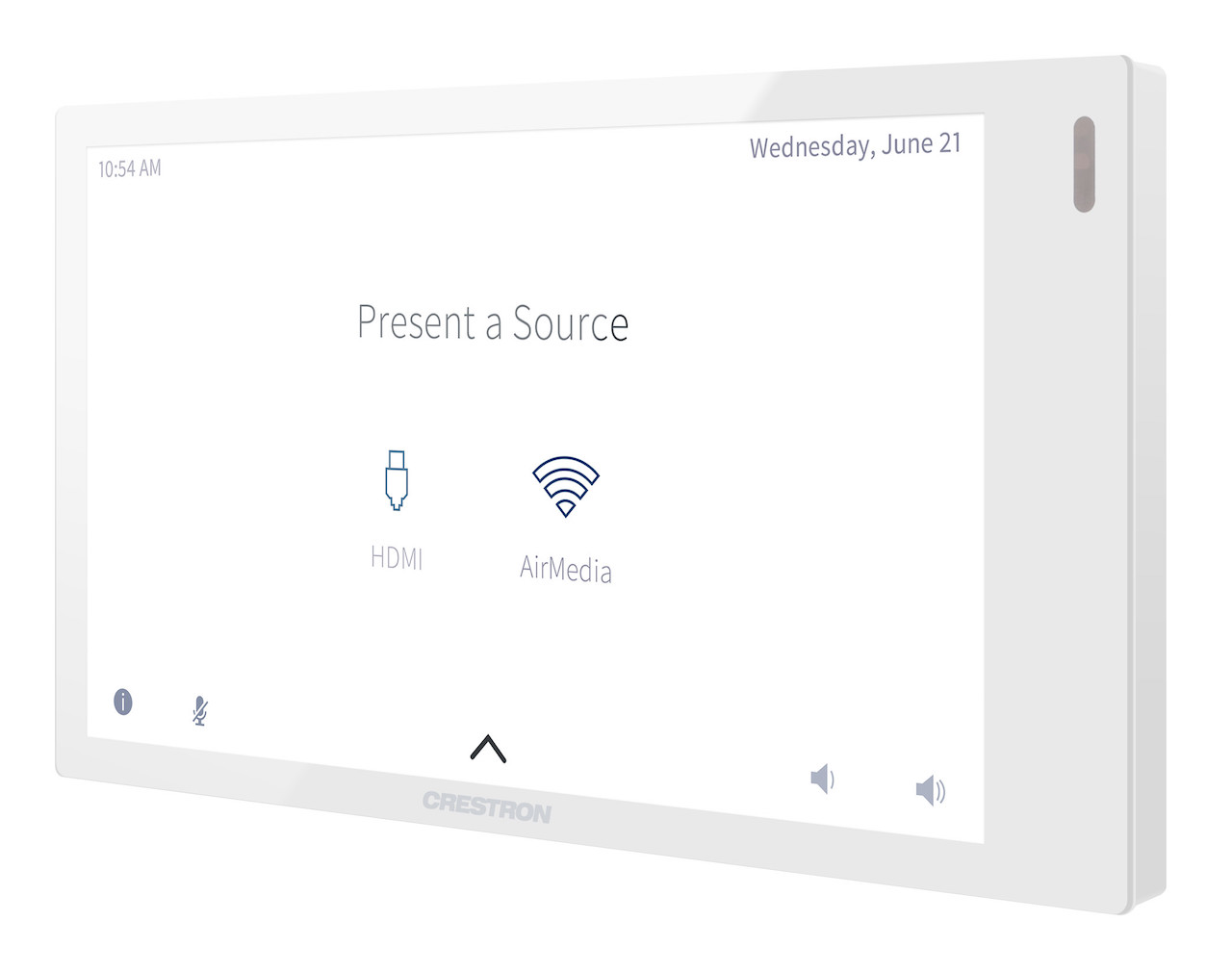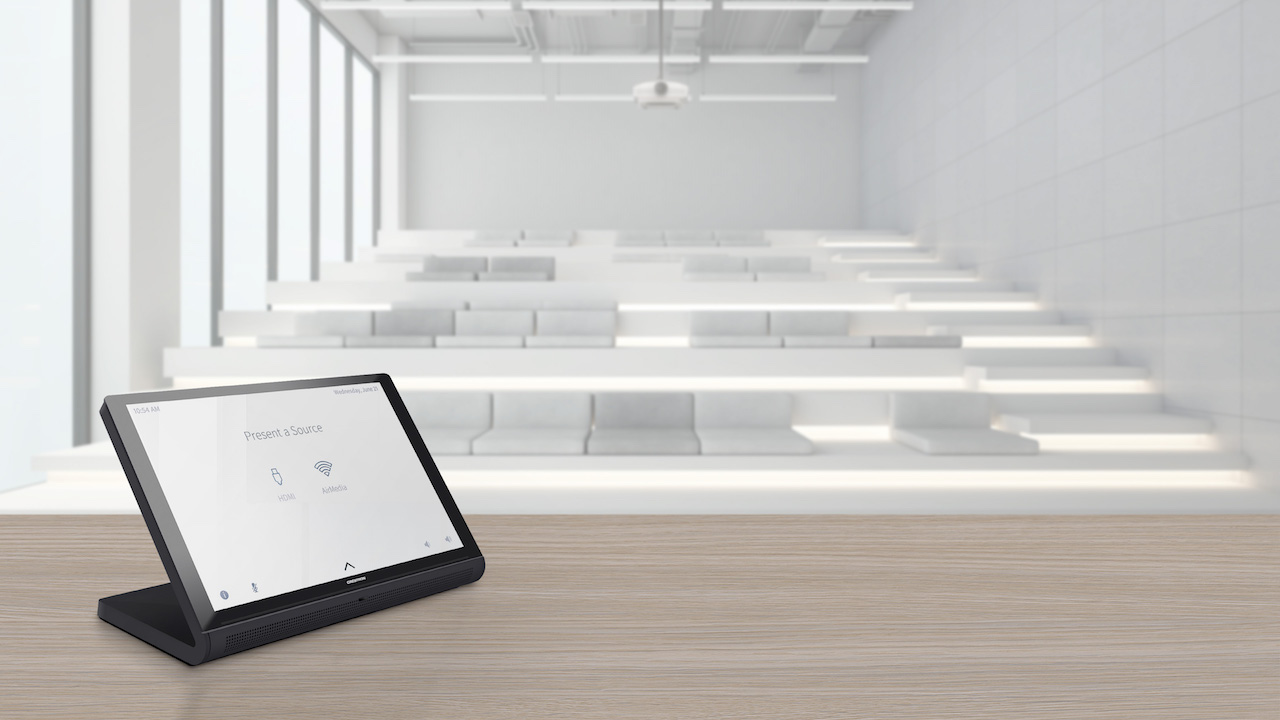Crestron’s new 70 Series touchscreens are designed to provide automation in the modern workplace. According to the company, the touchscreens provide a gateway to control a variety of building systems—including AV, unified communications, lighting, and building automation across the most demanding of locations including sports stadiums, command centers, classrooms, boardrooms, training rooms, and more.
I evaluated the 70 Series TS-1070-B-S, 10-inch tabletop model. At first glance and holding the touch screen, the panel looks and feels more robust and solid than previous Crestron touchscreens. It has a sleek and modern look that is more aesthetically appealing than the current model and the tabletop dock. Visually, the first thing you’ll notice is the removal of the side buttons—which leaves more real estate for the panel itself. The higher screen resolution allows for better looking graphics and icons.
Of course, the panel offers standard features such as PoE+, security, SIP intercom, and connection to the XiO Cloud Service, but the new generation really does offer so much more than previous generations.

The increasing demand for a better user experience across all verticals is driving redesigns of equipment across the board in the pro AV industry. Specifically, for touchpanel solutions, the user experience is about more than just the interface; nevertheless, the product is still the primary way users interact with equipment. New advancements in automation, such as proximity and even voice control, are becoming more prevalent, and Crestron was sure to implement them in the TS-1070-B-S.
The panel itself is very responsive with smooth scrolling—especially compared to older versions—and the increased processing is immediately apparent. The smart graphics and the enhanced processing allow for more commonly accepted gestures, feedback, and widgets.
Designing HTML5 user interfaces for the Crestron TS-1070-B-S gives greater flexibility to programmers. Upon loading our own interface, we immediately noticed the difference. Having this standards-based development tool will certainly give the flexibility demanded by modern day programmers.
The TS-1070-B-S offers the ability to stream video directly to the panel from security cameras, conferencing cameras, and even live media. Not only can it stream live video, but it allows for multiple simultaneous video streams—a very useful, bona fide upgrade from previous iterations of this product.

There are many applications native to and compatible with the Crestron 70 Series Touch Screens, and they provide a whole host of features and flexibility. Crestron Scheduling, Sonos, Zoom Room, Microsoft Teams, and many third-party applications are supported. As is typical of many touchpanels, this model integrates directly with Microsoft Exchange Server software (for users of Outlook software and Office 365 software), and the Google Calendar app (including G Suite software). These features will offer users many different possibilities and ways to integrate one type of product easily on small jobs or enterprise deployments.
Overall, the new 70 Series is far superior to the previous generations of panels from Crestron in both style and performance. This will become a great tool and addition to the Crestron lineup of products for versatile offerings and installations.
Jeremy Caldera, CTS-D, CTS-I is the CEO and chief design engineer of audiovisual systems at IAS Technology, and is a member of the AVIXA University senior faculty. Caldera helped develop the Audiovisual System Design curriculum at Columbia College Chicago where he sits on the academic advisory board and teaches AV design. He is the former chair of the AVIXA CTS Certification Steering Committee, former member of the AVIXA governance Leadership Search Committee and is the current chair of the revision task group for the AVIXA/ANSI Standard for Audiovisual Documentation and Coordination Processes.

